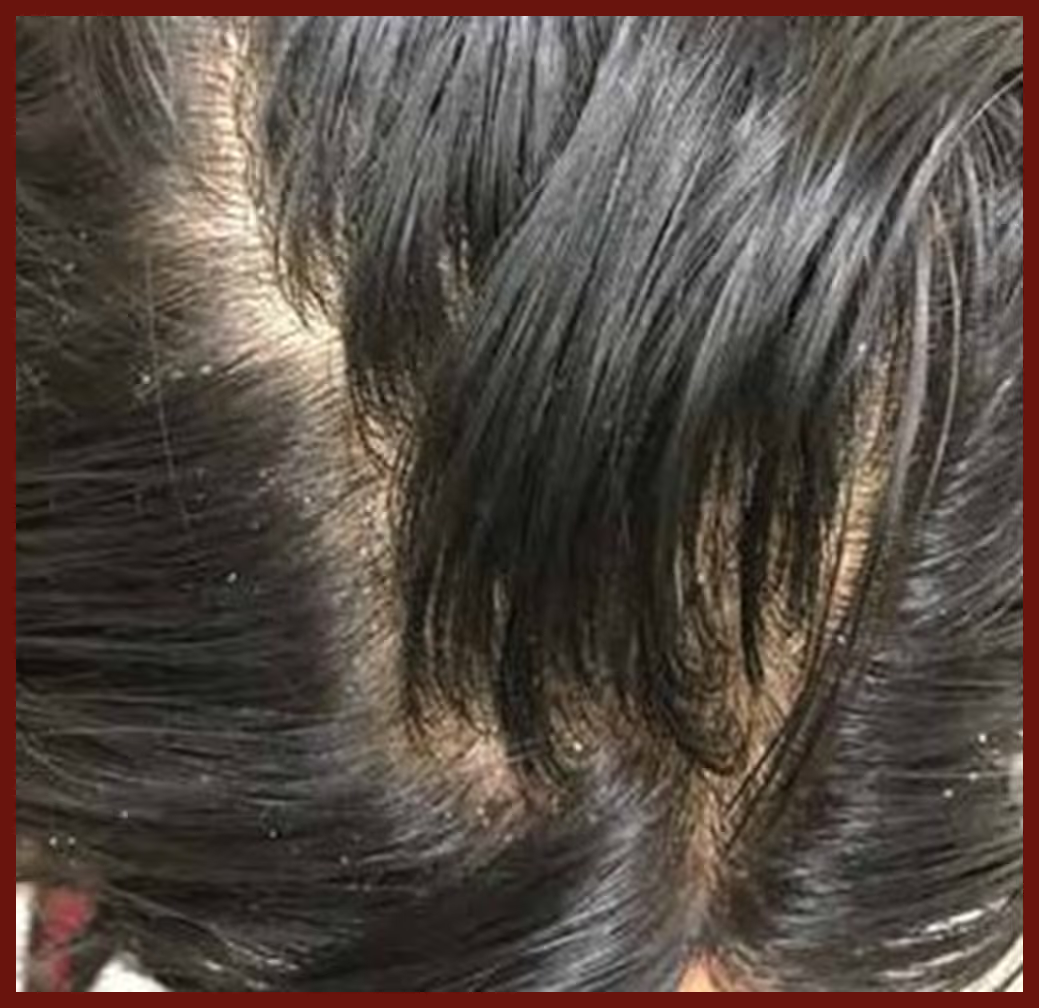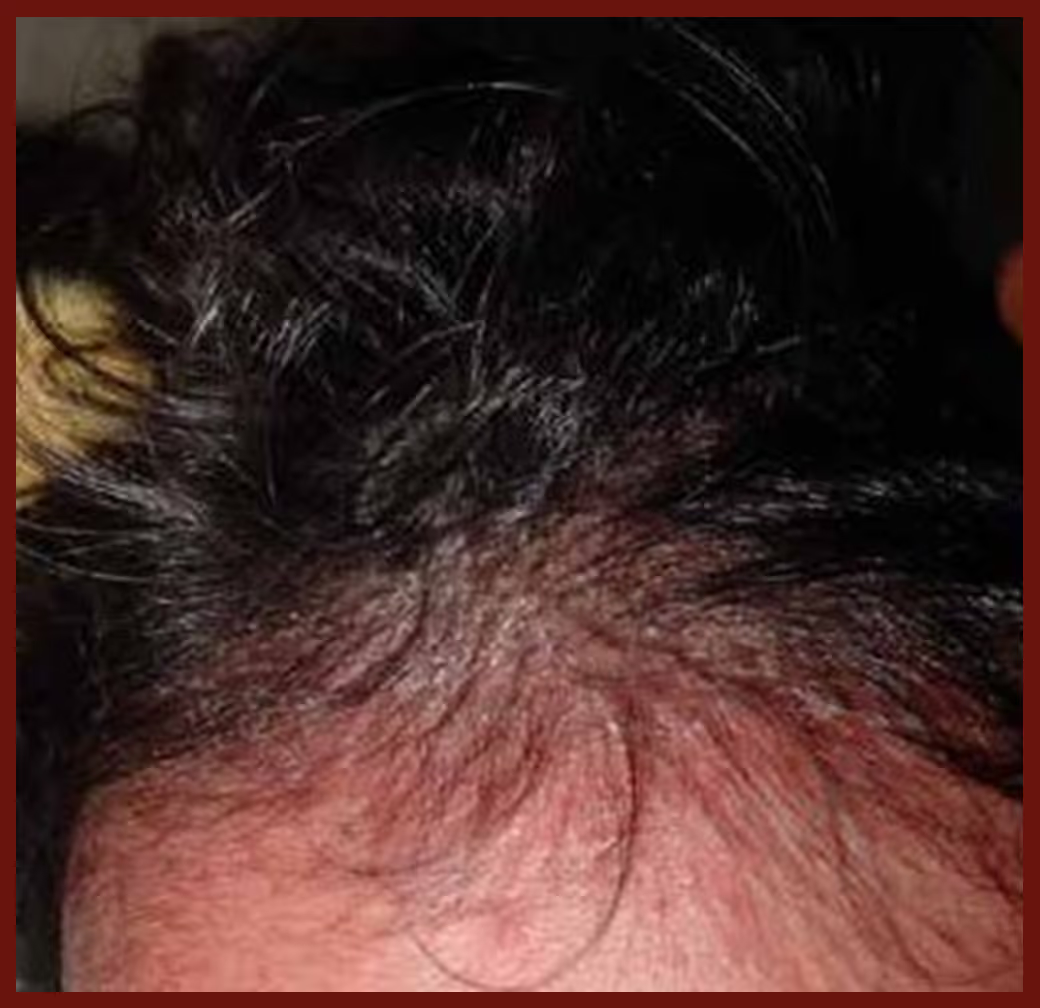Dandruff is a common scalp condition in which small pieces of dry skin flake off from the scalp and is usually associated with itching.
Dandruff is considered to be a mild form of an inflammatory disorder of skin called "Seborrhoeic Dermatitis”
Dandruff typically affects only the scalp and is a mild form with loose adherent flaking.
Seborrhoeic Dermatitis can extend beyond the scalp and affects the folds besides the nose, ears, eyebrows, beard area, upper back and chest Redness and itching of the skin is seen along with flaking which may be dry or yellowish and greasy in nature.

The exact cause of Dandruff and Seborrhoeic Dermatitis is unknown.
Possible causes include increased oil production and secretion, increased numbers of normal skin yeasts and a genetic predisposition.
Common triggers (factors that may worsen) include oily skin or scalp, emotional stress, weather (cold and dry), poor hygiene and infrequent washing or shampooing. Dietary factors do not play a role.
Seborrhoeic Dermatitis is also more seen and more severe in HIV infection and Parkinson’s disease patients.

Seborrhoeic Dermatitis commonly manifests in adolescence or adulthood. However it can also be seen in children as cradle cap on the scalp or as a rash in the nappy area Seborrhoeic Dermatitis can manifest as itchy flaking skin or the rash may be present without any symptoms. It can have varied presentations as:
Itchy scalp
White flakes on shoulders of dark clothing Scaly facial skin
Facial rash over eyebrows, nose, and ears
Recurrent ear eczema-itchy flaky skin or oozing in the ear canal
Oily scalp and facial skin with dry flakes Eyebrow or beard rash
Rash on the trunk ( mid-chest or mid-back)-dry flakes and red spots
Rash in the skin folds (armpits, groins, under the breast)-redness/scaling
Seborrhoeic Dermatitis has a genetic predisposition and can be seen in other family members.
As some fungi are normal components of skin flora, its presence on microscopy of skin scrapings is not diagnostic.
Diagnosis of Seborrhoeic Dermatitis is chiefly on history and clinical examination.
There are no conclusive laboratory tests to diagnose Seborrhoeic Dermatitis.
Skin scrapings and biopsy are done to rule out other conditions which can resemble Seborrhoeic Dermatitis (ringworm, psoriasis).
Different types of shampoos may be prescribed for Dandruff. These include:
Tar-based shampoo Ketoconazole based shampoo Zinc pyrithione based shampoos
Selenium sulphide based shampoo Ciclopirox based shampoos
Shampoos should be used at least twice a week for 3 to 4 weeks.
Once applied the shampoo needs to be left on for 5 to 7 minutes to ensure adequate time for action.
All affected areas including the scalp, ears, face, and chest should also be washed with the therapeutic shampoo.

The treatment options include antidandruff shampoos, cleansers, anti-inflammatory creams/ lotions, antifungals and keratolytics.
Mild topical corticosteroids, preferably in lotion form are prescribed for 1-3 weeks to reduce the inflammation. Cream based topical steroids may be used for disease affecting face, ears, eyebrows.
Topical calcineurin inhibitors or topical antifungals can be used or combined with mild topical steroids. Oral antifungals are indicated in severe cases.
Keratolytics can be used to remove scales when necessary
All these need to applied under the guidance of a dermatologist
The choice of treatment depends on the sites affected, and extent of symptoms.
Maintenance treatment is usually needed.
Seborrhoeic Dermatitis improves with treatment, but there is no permanent cure.
Increase sebum production is an individual tendency and can recur. Those who have a tendency to develop Seborrhoeic Dermatitis recurrently require retreatment at frequent intervals.
Disclaimer: This article is only for general patient information and is not intended for self medication. There is no legal liability of IADVL arising out of any adverse consequence to the patient. Subsequent to its use for self treatment of the disease images adjust for the depiction of the condition and is not to be used for any other purpose.
Explore articles in this section to gain a deeper understanding of various skin diseases and conditions. Each article provides detailed information on symptoms, causes, and treatment options, helping you to manage and address these dermatological issues effectively.

Psoriasis is a skin condition where new skin forms at a faster rate, showing up as red rashes with whitish scales, commonly over elbows, knees, and other body parts.

Dermatophyte infection is a superficial fungal infection of skin, hair and nails. It is also known as ringworm. In Hindi it is termed as Daad and in Marathi it is termed as Gachkaran.

Painful swelling involving the hair is commonly known as boil or folliculitis. If it occurs more than three times in a year, it is known as recurrent folliculitis. when the infection is transmitted by direct skin contact.